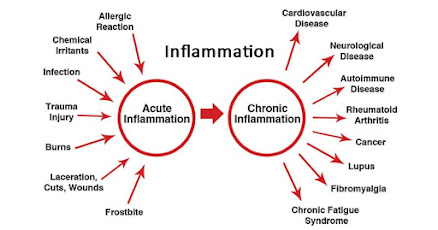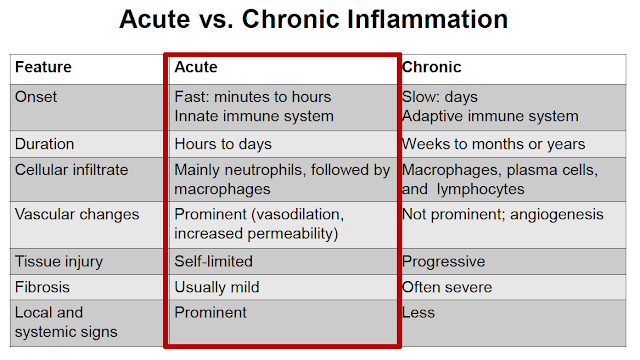Inflammation and its Types
Inflammation
Inflammation is biological response of body tissues to harmful stimuli , such as pathogens ( bacteria , virus), damaged cells or irritants and its a protective response involving immune system cells , blood vessels and many molecular mediators
 |
| acute vs chronic inflammation |
Types Of Inflammation
1) Acute inflammation
2) Chronic inflammation
Acute inflammation
It is a short term process towards tissues injury usually occur in mints or hours . It is characterize by five cardinal signs ; pain ,immobility( lose of function), redness , swelling and heat .
Main characteristics of acute inflammations are
1) Exudation of fluid and plasma proteins
2) Move leukocytes towards injured part of body ( Mostly Neutrophils ).
Neutrophils are dominant cells in acute inflammation.
 |
| acute inflammation inflammation |
Components
Acute inflammation has three major components
1) Dilation of small blood vessels leading towards an increase in blood flow
2) Increase permeability of microvasculature
3) Emigration of leukocytes to leave micro- circulation
Examples: acute bronchitis, a sore throat from a cold or flu or an infected ingrown toenail
Chronic Inflammation
Chronic inflammation is a response of pro-longed duration ( weeks or months ) in which inflammation tissue injury and repairing attempts coexist in varying combination .
It may or may not follow acute inflammation.
In chronic inflammation mostly dominant cells are macrophages
 |
| chronic inflammation |
Examples :
- Ucerative colitis and Crohn's disease
- asthma
- chronic peptic ulcer
- tuberculosis
- rheumatoid arthritis
- active hepatitis.
- .
-


Comments
Post a Comment
avoid from enter spasm link